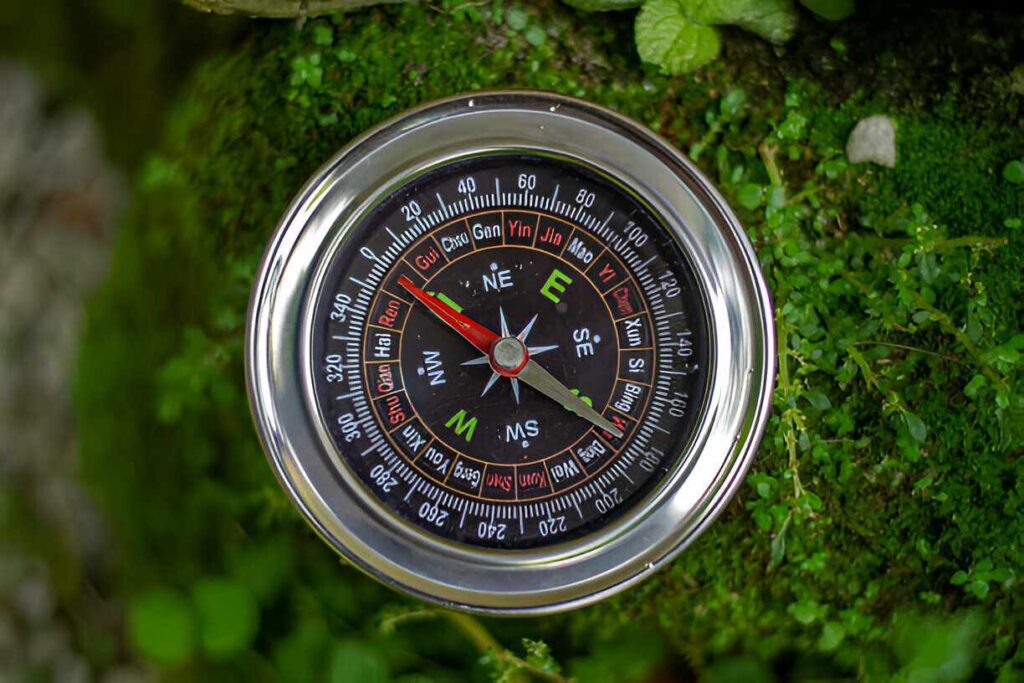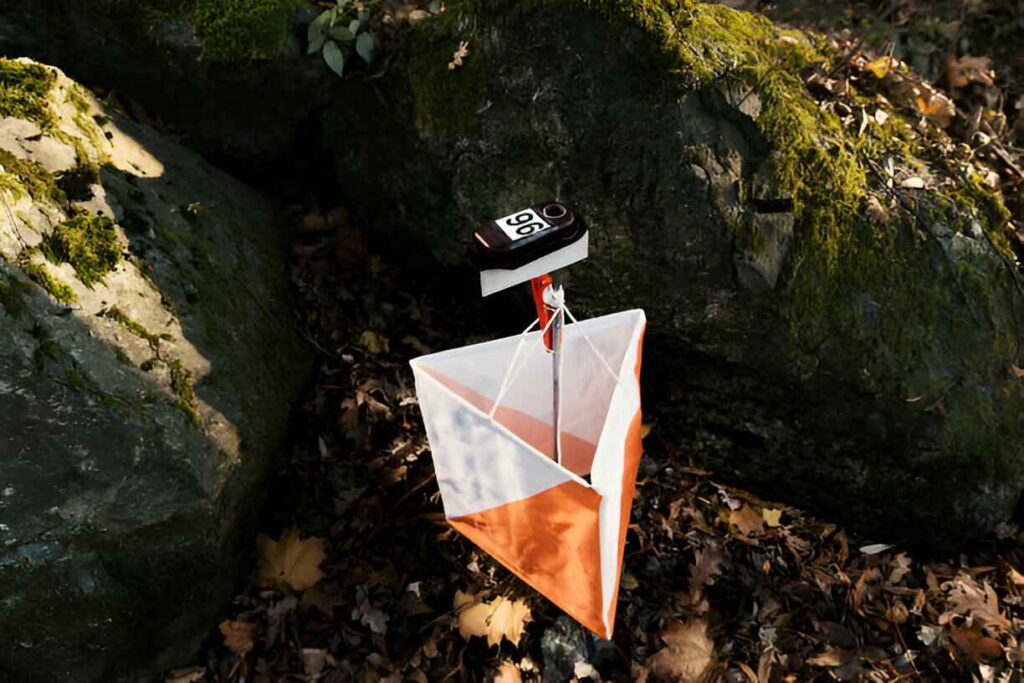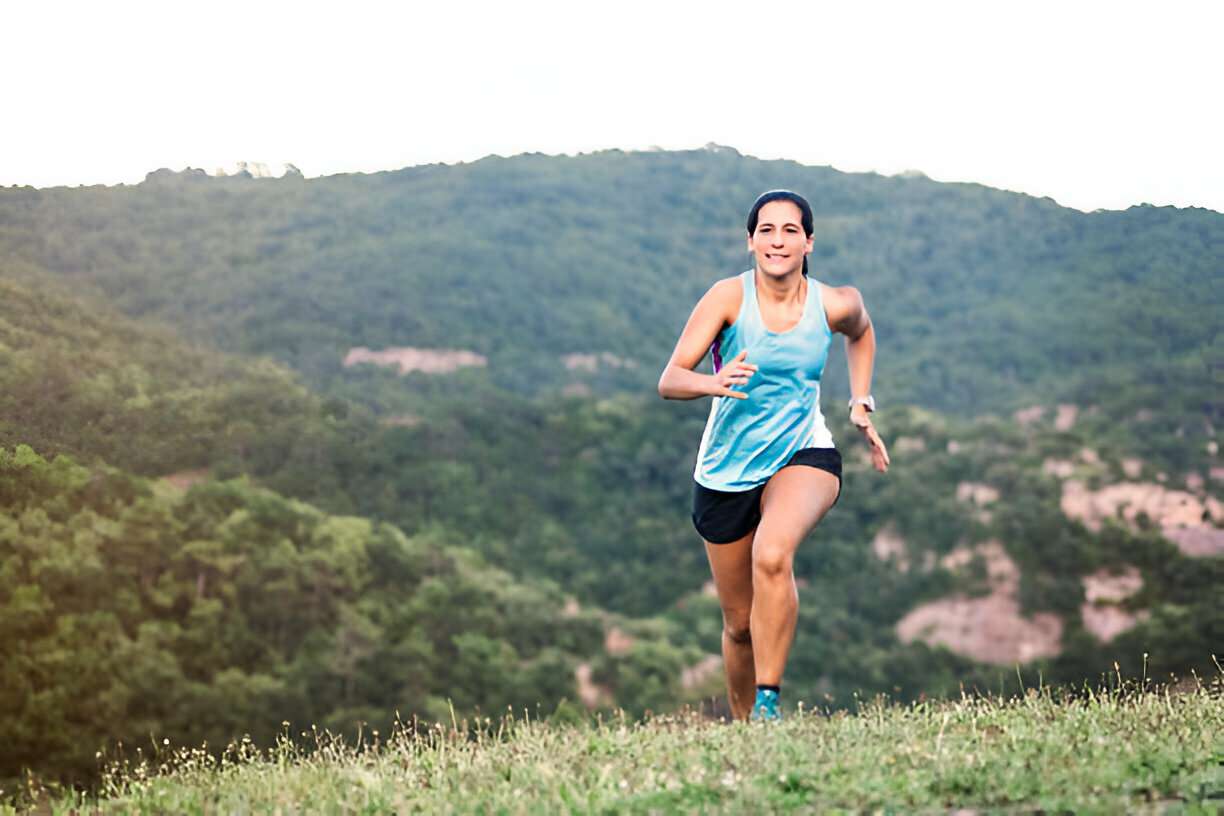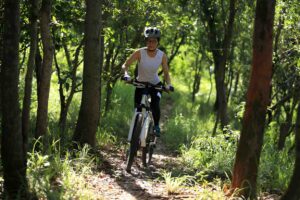Advanced techniques refer to specialized skills and methods that go far from the basic understanding or operation and are optimized through experience and great and groundbreaking innovation. In trail running, they are quite indispensable in enhancing the performance, improving safety, and the maximum enjoyment of trail runners. Trail running presents a number of specific challenges, including various surfaces, uneven ground, elevation, environmental conditions, and weather uncertainties. With that, advanced skills in trail running allow the athletes to further develop their skills and confront a more challenging level of running trail.
Likewise, one of the matters of prime importance that advanced trail running techniques have is increasing running efficiency on different kinds of running terrains. Abilities like power hiking, a combination of walking and running on a steep hill, enrich a runner’s ability while using lesser energy. Moreover, learning how to run downhill without losing control helps you achieve increased speed on downward slopes with reduced risk of injury. This is another way to start looking experienced versus being a newbie trail runner at risk. These techniques increase physical performance and develop mental toughness, which helps runners approach bigger, more challenging trails with confidence.
The below section of this research should reveal exactly how runners will adopt such advanced techniques into their routines. We will showcase strength and agility workouts that are in alignment with trail running, gear needed for various selections of trails, and nutrition strategies relevant to long-distance running. Insights from veteran trail runners are followed by personal vignettes of pioneering innovators—helping to ensure that these advanced techniques are truly modernised.

- Better Footwork: Advanced work regarding footwork, such as lifting knees high and making deliberate strikes, improves stability and helps avoid injuries over uneven surfaces.
- Steep Climbing Techniques: Learn how to handle climbs and even steep inclines: power hiking and placement of the hands to gain better traction and balance.
- Downhill Running: Get into techniques like controlled descents, fast descents while leaning forward a little, and taking longer strides to keep up with the forward lean, which helps you manage momentum effectively.
- Strengthen your core: Include core exercises such as planks and rotations to enhance balance and form during running. Trail technicals: Develop the ability to read the trail that lies before you and make on-the-spot changes when required to adapt to changing conditions with speed and safety. Manage energy efficiently: Pace, hydrate, and fuel well to conserve and use energy best for maintaining performance levels over long distances.
- Advanced Breathing Techniques: Utilizing controlled patterns and breathing methods in order to retain oxygen efficiency and increase endurance, particularly at high altitude and heavy trail.
- Bringing this suite of advanced trail running techniques to master level will enable dramatic performance, less potential injury, and also provide the ability and confidence needed to efficiently negotiate more technical and difficult trails.
What Are Some Of The Best Advanced Ways To Trail Run?
The focus keyword “advanced techniques” covers these specialized terms relevant to running trails. “Tempo runs” are longer, more intense periods of training at a faster pace than one would normally run. “Fartlek” is a kind of interval training that combines brisk walking, jogging, and sprinting. “Hill repeats” are short, hard hill climbs, usually performed repeatedly to develop hardiness and stamina. “Technical trails” describe paths that present difficult or treacherous terrain and which require proficient foot placement and agility without looking at the ground. Last, but not least, “negative splits” refer to running the second half of an event or distance faster than the first half.
Advanced techniques in trail running are value-laden, nuanced strategies and skills that have been developed to deal with a variety of terrains and conditions. Seasoned runners deploy hill repeats to increase climbing efficiency, tempo runs for putting on pace, and technical trails to enhance agility and stability. These techniques correct some flaws associated with inferior performance, focus, and endurance, hence making trail running an exercise but an art form where great regard resides in one’s potential and the environment. Every method exists to nurture specific attributes critical to elite trail running—from muscle strength to mental fortitude sharpening.

Appropriate Footgear
Selection of appropriate footgear is essential to any other outdoor activity. The shoes have to enhance comfort, provide protection and help avoid injury. Varied landscape means different types of footgear. The different outdoor terrains are different and at times extreme demands on a sporting or any other outdoor activity. For instance, rugged terrains may require shoes with more grip and ankle support. Softer surfaces will do best with very light, breathable shoes. Consequently, this implies that good investments are worthwhile in well-fitting footwear that is particularly designed for the purpose in question in order to assist not only in making one’s experience great but also in minimizing the risk of getting blisters and strains.
Essential Nutrition for Optimal Performance
Nutrition is one of the intrinsic components of peak physical performance. A balanced diet consists of the nutrients needed in carbohydrates, proteins, fats, vitamins, and minerals; they help in sustaining general energy, repairing the muscles, and ensuring general health. This means one has to take every day’s allowance since the body derives its maximum amount of energy from them. They become more crucial during exercise periods prolonged over a day. Proteins enhance recovery by the muscles while healthy fats give a pretty lasting energy effect. Since the body also needs to be kept performing at its best all the time, adequate hydration is also critical. Such personalized nutrition greatly boosts stamina and endurance.
Leveraging Technology for Awesome Endurance Experiences
Modern technology has extended to them many tools to enhance the experience of such an outdoor activity. Devices such as GPS watches, hart rate monitors, and fitness trackers provide valuable data that will help in tracking progress and thus optimizing performance. For instance, some GPS watches enable planning the route and real-time tracking, ensuring safety and giving information on distance, elevation, and pace. Heart rate monitors can assist in making efforts that are maximally efficient without overdoing it. Most of the time, these devices can be linked with mobile applications to give the user an overall idea of his activity so that he can set a long-term goal and follow it up.
Clothing Choices: Comfort vs. Functionality
Proper clothing in any outdoor activity is paramount. The best choice of clothing and accessories will find the perfect balance between comfort, protection, and functionality. Fabrics will be key—a moisture-wicking fabric will be great to handle perspiration and keep the body dry, whereas thermal layers are important to hold the insulation of the body in case of colder conditions.
Additionally, shirts are also available where they impart protection against harmful sun exposure. Versatility should be the key, as some clothing can easily adapt to changes in weather without the need for any compromise in comfort or performance. Layering can be a common strategy; easy adjustment is always possible concerning the body’s insulation because it’s easier to take something off than wish you had it.
Strength Training: Creating a Strong Base
There is no better way to prepare for outdoor adventuring than to incorporate strength training. Core strength allows for enhanced balance as well as a more effective use of energy. The definition of strength training is the use of free-weight exercises that engage large muscles groups that simultaneously build endurance and help safeguard the body from injury. Key strength-building exercises include squats, deadlifts, and lunges, which particularly benefit the lower body muscles, CRUCIAL for maneuvering different terrains easily. Upper body strength, attained from push-ups, pull-ups, and rowing, aids balance and overall body control. Blending resistance, body weight, and flexibility workouts, one achieves a complete regime inseparable from all the physical challenges active outdoor lovers can experience.

What are some key advanced techniques in trail running?
Proper running form, good pacing, and understanding the terrain are some of the key advanced techniques for trail running. Make sure that the body is aligned and the stride is efficient. Lean slightly forward, keep your gaze forward, and maintain a short but quick cadence to adapt to varying terrains.
Apart from form, hapling downhill and uphill running often lead to a better performance. Downhill running involves a gradual decline with the knees slightly bent trail to reduce the impact, and uphill running improves with a short step and sound pumping arm to keep the momentum without exhaustion.
How do you successfully maintain different terrains while on a trail run?
A critical part of managing such varied terrain as you come across is having to adjust your running style to the different challenges you will face. To negotiate rocky ground, you will need to be taking higher footsteps to ensure that your toes clear the rocks and you maintain a low center of gravity; therefore you will not tip so easily. When the terrain is slippery or boggy, taking small, careful strides can be used to ensure you stay on balance and don’t fall.
Also, beforehand, watch what is ahead to anticipate changes in the trail. You can then moderate your pace and stride to your awareness so that you will not lose your solid footing. And good footing goes with picking well-tractioned and supported footwear, which in turn gives you better strokes when traversing through the terrains.
Which of the listed training routines leads to an improvement skill of trail running?
Classic improvements in your trail running can be gained by including a mixture of exercises, endurance, strength, and technique work. Long distance runs will develop your stamina, interval training will help to improve variety and foster better speed and recovery times, hill repeats per se will enable the strength to build into the respective downhill and uphill muscle groups.
Strength training will also become paramount, focusing on the legs with some core and stabilizing muscles. Include exercises like squats, lunges, and planks in order to improve the strength of the entire being. Add in specific trail running drills, such as uphill sprints and technical descending, to the practice in order to continually build technique and gain confidence on challenging trails.
What should one focus on while running down steep trails?
A steep descent really requires a good sense of speed and control. Throwing that body slightly forward allows for the ability to balance properly and have a smoother stride at the same time as you try to make the effort to keep those knees a little bent to take away the strain on the joints. Quick, small steps can offer more control compared to long, bounding strides.
Arm position is also key in terms of balance. Extend your arms a little to the side to balance yourself, as if you were walking on a tightrope. Look at a target a couple of feet ahead to react fast to any sudden shifts in the track. Descent is highly skill-dependent, so it does take time before you really glue all these tips together to become efficient.
How to get better at uphill running on trails?
It is a mixture of physical conditioning and technique: building leg strength, especially with exercises like hill sprints, lunges, and step-ups, that give you the power to get up steep inclines. Running consistently on various inclines develops the endurance component you need during hill climbs.
In technique, lean slightly forward into the hill and use short steps as opposed to going into large strides. Also use core muscles and a good efficient arm swing to facilitate momentum. Controlled breathing and pacing are key while reading the hill for grade changes and length in order to maintain and sustain effort over the entirety of a steep ascent without going anaerobic.
How important is good hydration and nutrition in advanced trail running?
In advanced trail running, nourishment and proper hydration support one’s performance and lower fatigue. Proper hydrating and fueling are critical, lest dehydration sets in, making one have decreased coordination and even more risks of injury; therefore, it is important to drink water regularly, even when not feeling thirsty. Replacing electrolytes is also more than vital on longer runs to balance what you lose through sweat.
Your nutrition truly fuels your body and helps maintain your levels of energy. Consuming a well-balanced diet, including sufficient complex carbohydrates and protein with a fair amount of fat, will make sure your muscles get the necessary fuel for all the runs. It is recommended to carry along some energy gels, bars, or snacks, during long runs and as such refuel your glycogen store appropriately to stave off the fatigue. Now your post-run nutrition in terms of protein and carb intake will help in muscle recovery and repair.
What gear is recommended for advanced trail runners?
Advanced trail runners should be geared up for improved performance and safety. A good shoe for trail running provides good traction and support to deal with the different terrains effectively. The other required gear is clothes that help to wick moisture away from your skin to maintain a comfortable body temperature.
Some other good gear would be a hydration pack or belt to make sure you have enough water, along with a small first aid kit for emergencies. Trekking poles can be an added advantage for steep inclines and descents because they give stability and support. Lastly, a GPS watch or a navigation device will be very important in assisting to navigate the trails and follow your current location.
How Do Advanced Techniques Differ In Night Trail Running?
Night running has its own challenges, so you will need extra techniques and some gear. Poor visibility at night with all that darkness means a bright headlamp or handheld flashlight to illuminate the trail to enable one to spot hazards. Wear reflective clothing or gear for better visibility for others and ensure safety on the road.
Running at night also takes greater vigilance and a slower, more conservative pace. Much of the risks can be greatly minimized with familiarity of the trail, so running on known trails is recommended for practice. Having a communication device within reach and letting someone know your path as well as when to expect to see you again provide some added protection for running in the dark.
Explain how one could improve their performance in trail running by introducing mindfulness and various mental techniques into the practice.
Mindfulness and mental strategies are important in advanced trail running. Being prepared in such a way for the challenging situations that trail running presents will increase focus and mind power. Practical mindfulness—being in the moment and focusing on the breath—helps a person deal with stress and attain focus on the trail.
In addition, setting mental goals and visualizing success not only enhance but boost performance and motivation. Positive self-talk and affirmations can also help offset any fatigue and mental challenges experienced during tough runs. On an overall note, mental conditioning and physical training combine to boost your entire trail running experience and performance.
How Can I Best Cool Down And Recover After Completing A Particularly Long And Hard Trail Run?
High-intensity trail running requires recovery in hydration, nutrition, and rest. After rehydration and restoration, rehydrate by taking fluids with practically no added sweeteners, such as water and beverages high in electrolytes like post-run performance drinks. A well-balanced meal is also of equal importance to replenish energy by intake of carbohydrates and proteins for muscle repair within the first hour of running.
It’s always good for light stretches or walks because these active recoveries would often help in muscle tension relaxation and blood flow increase. The foam roll up or massage will help to reduce soreness and developmental flexibility in the muscle. Not to forget, one should get enough sleep, rest that would allow repairing and rebuilding stronger muscles to be ready for the next trail running.
Improving on advanced trail running techniques can have a big impact on your performance and enjoyment in the sport. Terrain adaptation is the name of the game here.
Developing the ability to get from point A to point B fast and confidently over any type of ground—rock, mud, loose gravel—takes a lot of the risk of injury out of the equation, and allows you to keep the pedals turning at a nice, steady effort. Other key components are efficient running form going both up and down. Practice the tendency to run with short and quick strides going uphill. One should then comfortably hold slight forward lean to keep balanced going downhill.
This, too, brings out endurance, which is developed through training in intervals and hills, thereby keeping you earmarked as strong over long distances. Foot placement and agility matter as well: the ability to read the trail fast enough while making adjustments in the steps surely makes all the difference in ensuring that you run in a smooth manner, free from blunders and sprawls.
Advanced tactics will also include the gear and nutritional plans outlined for longer, technical routes. Selecting the right shoes and hydration systems can provide needed support for enduring tougher conditions on a more extended, technical route.
Finally, advanced trail running demands mental toughness. Visualization and positive self-talk are two key components that help you stay focused and resilient to physical and environmental stress. With these advanced training hands-on techniques in your program, you have better placement and capability to confront and dominate tougher trails with confidence.








